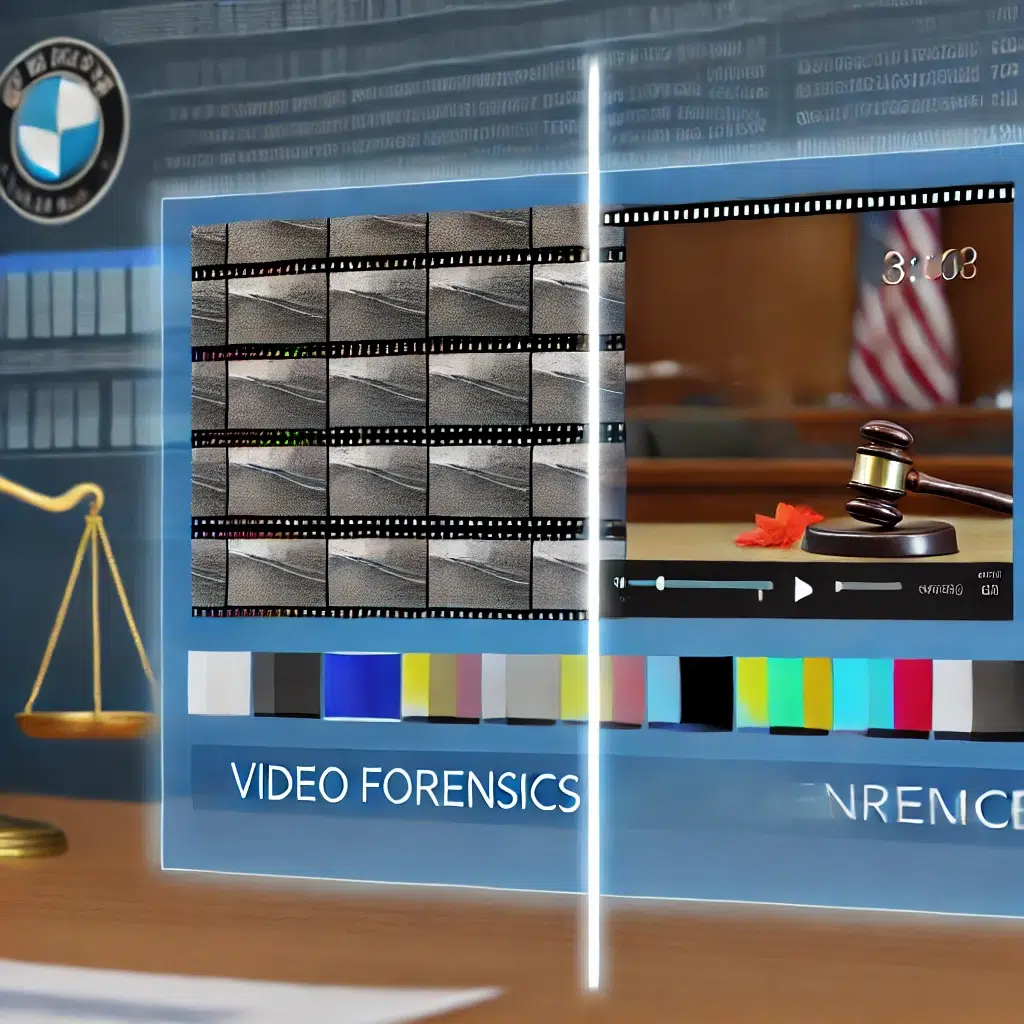Video evidence has become a cornerstone in criminal defense cases, playing a critical role in determining a defendant’s fate. With surveillance cameras, body cams, smartphones, and dash cams seemingly everywhere, countless moments are recorded that could be pivotal in proving guilt or innocence. However, video footage isn’t always as straightforward or reliable as it might appear at first glance. This is where video forensics becomes essential, providing criminal defense attorneys with the expertise to thoroughly analyze and scrutinize video content, ensuring it authentic, accurate, and untampered.

Understanding Video Forensics
Video forensics is the scientific examination, analysis, and evaluation of video recordings to ascertain their authenticity and accuracy. This discipline involves a range of techniques and technologies that enable forensic experts to detect signs of manipulation, clarify ambiguous footage, and extract critical details that might not be immediately visible to the naked eye. For criminal defense attorneys, video forensics can be instrumental in challenging the prosecution’s evidence, providing a more comprehensive picture of the events in question, and ultimately supporting the defense’s case.
Key Applications of Video Forensics in Criminal Defense
- Detecting Video Tampering: One of the primary concerns with video evidence is the possibility of tampering. Edited, spliced, or otherwise manipulated footage can drastically alter the narrative of an incident. Video forensics experts use advanced software to analyze the metadata of a video file, looking for discrepancies that indicate tampering. This might include identifying unusual gaps in the footage, detecting inconsistencies in the time stamps, or spotting signs of frame manipulation. For criminal defense attorneys, exposing such tampering can be pivotal in discrediting the prosecution’s evidence and protecting their client’s rights.
- Enhancing Video Quality: In many cases, the video footage available to criminal defense attorneys may be of poor quality—grainy, dark, or taken from an odd angle. Video forensics can enhance the quality of such footage, bringing out details that were previously obscured. Techniques like deblurring, noise reduction, and frame interpolation can clarify the images, allowing attorneys to identify critical elements, such as facial features, license plates, or actions that could support the defense’s narrative.
- Analyzing Frame Rates and Timing: The timing of events in a video can be crucial to understanding what happened. Video forensics involves a detailed examination of the frame rate and timing within the footage. For instance, inconsistencies in frame rates might suggest that frames have been added or removed, which could alter the perceived sequence of events. By accurately establishing the timeline, defense attorneys can challenge the prosecution’s version of events or corroborate their client’s alibi.
- Matching Audio with Video: Often, video evidence includes an audio component that is just as important as the visual. However, audio tracks can be manipulated independently of the video, leading to misleading interpretations. Video forensics can synchronize audio with video, ensuring that what is heard matches what is seen. This can be critical in cases where the prosecution’s evidence hinges on statements or sounds captured in the footage.
- Validating Source and Chain of Custody: For video evidence to be admissible in court, it must be proven that the footage is genuine and has been preserved in its original form since it was first recorded. Video forensics plays a vital role in validating the source of the video and ensuring that the chain of custody has been maintained. This involves verifying the recording device, ensuring that no unauthorized copies were made, and confirming that the footage presented in court is the same as what was initially recorded. This validation process is essential for criminal defense attorneys to prevent the introduction of falsified or compromised evidence.
Case Examples: Video Forensics in Action
Case Study 1: The Altered Surveillance Footage
In a recent case, a criminal defense attorney was presented with surveillance footage that purportedly showed their client committing a crime. However, upon forensic analysis, it was discovered that the footage had been edited—frames had been removed, altering the timeline of events. The video forensic expert was able to demonstrate these manipulations in court, leading to the suppression of the video evidence and the eventual dismissal of charges.
Case Study 2: Clarifying Poor-Quality Video
In another case, a defense attorney was dealing with a piece of video evidence that was so grainy and dark that it was nearly impossible to identify the individuals involved. The defense enlisted the help of a video forensics expert who enhanced the footage, revealing that the person in the video was not the defendant but another individual. This critical piece of evidence contributed to the acquittal of the defendant.
Why Criminal Defense Attorneys Should Leverage Video Forensics
In the adversarial system of criminal justice, every piece of evidence must be scrutinized to ensure a fair trial. Video forensics offers criminal defense attorneys a powerful tool to do just that. By thoroughly examining video evidence, attorneys can uncover details that may exonerate their clients, challenge the validity of the prosecution’s case, and provide a clearer understanding of the events in question.
As video technology continues to evolve, so too does the complexity of analyzing such evidence. Criminal defense attorneys must stay ahead of these developments, utilizing the latest forensic techniques to protect their clients’ rights and uphold the integrity of the justice system. In a world where the camera never sleeps, video forensics serves as a vigilant guardian of truth, ensuring that justice is not only done but seen to be done.
Conclusion
Video forensics has become an indispensable tool in the arsenal of criminal defense attorneys. From detecting tampering to enhancing critical footage, the meticulous analysis provided by forensic experts can make the difference between conviction and acquittal. As video evidence plays an increasingly central role in criminal cases, the ability to effectively challenge and interpret this evidence is essential. By embracing video forensics, criminal defense attorneys can ensure that the full truth is brought to light, offering their clients the best possible defense.




